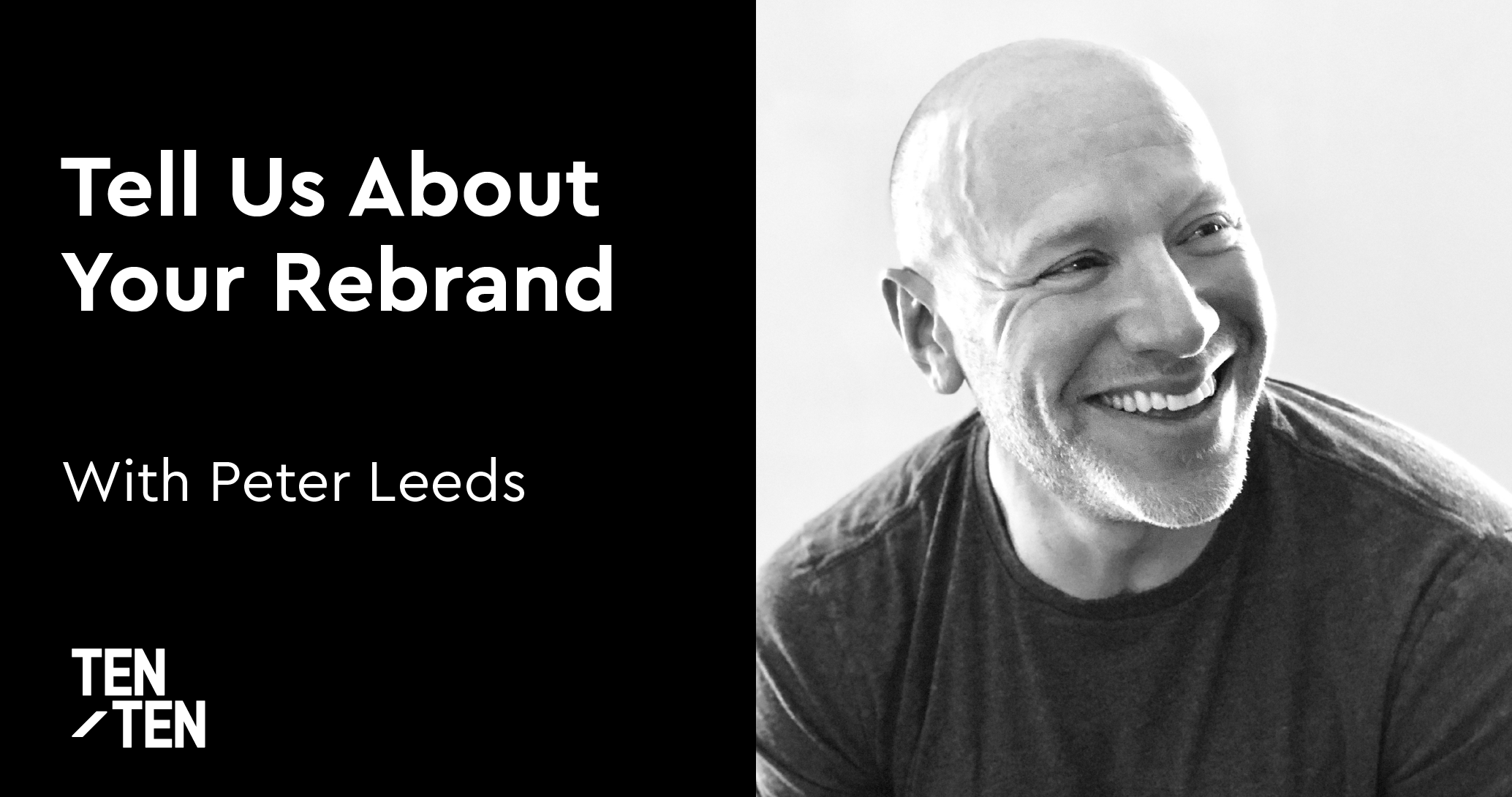
Peter Leeds is a brand and creative leader with proven experience building, nurturing, and inspiring high-functioning creative teams at agencies and client companies. As a strategic business partner, he’s focused on supporting growth, driving resource optimization, enabling brand development, and expanding cultures to be more uplifting and inclusive. He has worked across multiple platforms, leveraging data, technology, and insights to develop creative that’s both relevant and resonant to deepen bonds between brands and consumers.
During our discussion with Peter, we dove deep into the topic of agency/workstream management. In particular, we focused on whether to hire a large, lead agency to manage all subspecialties versus contracting with several smaller agencies to fulfill rebrand workstreams. It’s an important decision for any company looking to execute brand change.
Streamlining the rebranding process with a one-stop shop
“In the instance of rebranding ThomsonReuters, leadership determined that it made more sense to hire Interbrand as a one-stop shop. Given the number and complexity of business decisions being addressed at the same time as the rebrand, it was simply faster and easier togo through a brand strategy firm to execute a full brand-change package,” said Peter. “While this approach might have been somewhat more expensive, it took a huge load off of internal teams.”
Peter elaborates on the benefits of using a one-stop shop agency. “The lead agency serving as ‘general contractor’ takes great accountability for what comes across their desk and lands with the leadership team. Since they are presenting the work with their name on it, they put a lot of time and effort into making sure everything aligns to the brand strategy and is delivered with consistency. This is a huge advantage.Additionally, it’s a big time-saver since they are taking on the work of vetting talent, establishing contracts, completing initial rounds of creative reviews, and ensuring the work is accomplished against the agreed upon timeline. For a lot of companies, it’s worth the incremental cost to have this type of guidance and support.”
“As with most global enterprise organizations, the Thomson Reuters rebrand was a big deal because it was a major acquisition that fundamentally changed the industry landscape” Peter continues. “In one of the most visible manifestations of the new brand, there was a Times Square takeover that transformed everything from electronic signage to garbage bins to subway cars. It was a massive effort, and it helped to have a single entity atthe center of it all to ensure consistency.
“Another thing to consider is funding. When leaders are asking for money to support brand transformation, it can often be easier to ask for a larger amount of money to pay one vendor, versus several smaller tickets that raise questions around what’s necessary. Having one agency executing all of the work against a single budget can be easier to justify,” said Peter. “But it really depends on how the organization is approaching and presenting the initiative, and the appetite from finance to fund the efforts required to make the greatest impact.”
Tapping into specialists for innovation and impact
An alternative to hiring a lead, one-stop shop to manage brand transformation is assembling a team of specialty agencies who are experts at what they deliver, e.g. video, signage, social media, etc. “We took this approach at Freeman,” Peter says, “where we worked with an external partner on brand strategy, created a new logo and color palette in-house, and then brought in other teams for help with everything from the development of guidelines to a broadcast package.”
According to Peter, this approach can be effective because “smaller, more specialized firms use their subject matter expertise to push boundaries, coming up with new, innovative ideas for specific media, platforms, and outlets.” “Take social, for example. A one-stop shop could faithfully execute social media templates. But when it comes to developing bespoke solutions for specific targets/markets with precision and impact, they might fall short. An agency dedicated solely to social media, on the other hand, might be able to identify and capitalize on new brand-building opportunities that extend from pre- to post-launch and extend even further.”
“The downside to this approach is that it’s more for the brand or marketing team to manage. The influx of new, impactful ideas across different media channels places an increased burden on internal groups to ensure that decisions support a unified image and align with the brand strategy. Those decisions can’t be made in isolation and information must be brought back to a centralized team to keep all aspects of the brand working in harmony. Some companies have or find the bandwidth for this level of commitment/involvement and, as a result, get a higher level of subject matter expertise across every channel,” said Peter.
For companies who are looking to work with the best resources out there, they can still secure funding with proper budgeting and planning. “Presenting a cohesive brand implementation plan with a clearly outlined budget might be all that’s needed to secure funding for multiple resources,” said Peter. “It’s all about the story you tell.”
What it takes to succeed
When asking Peter what advice he’d give to others going through a rebrand, he stressed the importance of calculated and proactive planning. “Be careful not to underestimate what a rebrand will take in terms of time, budget, resources, and commitment from the organization and its leaders. Sometimes, in the early planning stages, it’s easy to dismiss the re-branding work effort as ‘an evolution of what currently exists,’ or ‘just a refresh.’ Even though refreshes may seem less complicated and/or costly, the fact is they require the same level of planning, budgeting, and coordination as a top-to-bottom rebrand,” said Peter.
Tell us about your rebrand
We were excited to speak with Peter and learn from his experience as a part of our Tell Us About Your Rebrand series. If you’ve recently gone through a rebrand, no matter what industry, we’d love to hear about it. Reach out at hello@tentengroup.com to share your thoughts and stories.
